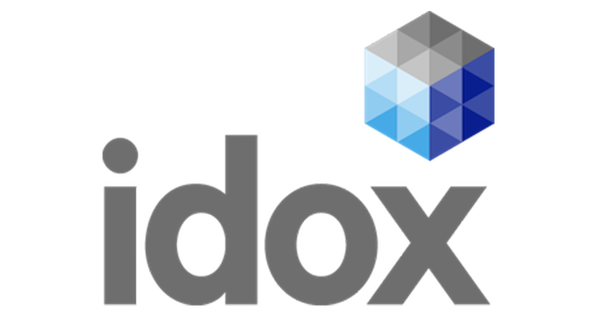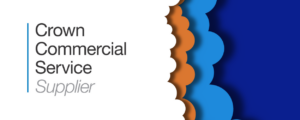Five ways CAFM supports workplace optimisation
As with many other aspects of life and work, COVID-19 caused a major shakeup in the facilities management sector. Where previously facilities managers were tasked with building maintenance, general repairs and upkeep, with the hybrid working model gaining momentum, renewed responsibilities have been placed on the shoulders of facilities managers. Their roles have grown in scope, encompassing additional tasks such as ensuring appropriate office occupancy levels, comfort and hygiene protocols and are relied upon more than ever to keep buildings safe, sustainable, and efficient.
The role of the facilities manager is now more prominent within successful organisations, shifting from an operational to a strategic level. But with increased pressures placed on facilities teams to support businesses to deploy successful hybrid strategies, how can they do so in a streamlined and cost-effective way? With a Computer Aided Facilities Management (CAFM) system in place, this strategy becomes less about an extensive list of burdensome tasks, and more an opportunity to reimagine the workplace for the better.
1. CAFM helps to improve the workplace experience
As the pros and cons of working from home continue to be debated, hybrid working has become the norm across many organisations and as such, space and desk optimisation has become a vital function. The way employees use the office space has fundamentally changed. Employees don’t need a permanent desk at their workplace with fewer people coming into the office, so organisations no longer need to cater to the entire workforce like before. Therefore, facilities managers must rely on tools to redesign office layouts to accommodate hot desking, collaborative working or breakout areas, while ensuring a great user experience and maximum productivity. Desk booking functionality also enables employees to reserve their preferred desk, while providing facilities teams with greater oversight of office occupancy levels and which areas need to be sanitised before the next use. By generating critical insights, CAFM systems help facilities managers effectively evaluate the use of an office for a fully optimised environment.
2. CAFM streamlines tasks via enhanced strategic oversight
With different user types to accommodate, every business has its unique needs when it comes to redesigning the workplace. By enabling enhanced strategic oversight of facilities, CAFM allows facilities managers to benefit from a smart response to fluctuating occupancy and energy levels. The monitoring technology in CAFM systems helps facilities teams better understand which spaces are occupied and therefore, need heating and lighting and not waste resources on rooms that are not in use. With CAFM, usage patterns can also be reviewed – restricting the use of certain spaces where necessary and supporting organisations in more efficient use of the environment, as well as contributing to their sustainability efforts.
The insight provided by CAFM systems supports facilities teams to optimise cleaning schedules, so they are aligned with an agile working model. This contributes to the overall experience for users – ensuring hand sanitisation stations are fully stocked and workstations are cleaned between users, for example. CAFM also facilitates intuitive desk booking and visitor management capability, helping facilities teams automatically manage occupancy levels in line with business or government guidelines.
3. CAFM enables planned preventative maintenance (PPM)
Unplanned downtime can cost businesses lost revenue, but the losses can go much further, including decreased productivity and even reputational impact. Keeping assets in good working order helps improve organisations’ bottom line and supports compliance efforts, keeps staff safe, and equipment working efficiently. With real-time status updates, CAFM also ensures jobs are logged faster and teams benefit from improved levels of efficiency. However, certain assets require more attention and frequent servicing to maintain optimum performance compared to others. And there can come a time when the cost involved in maintaining an asset may not make business sense.
With real-time status updates, CAFM also ensures jobs are logged faster and teams benefit from improved levels of efficiency.
By enabling PPM, CAFM systems help facilities managers with the correct inspection of assets – thereby reducing the number of reactive maintenance tasks and freeing up managers by identifying the assets that require servicing – cutting down unnecessary maintenance. With real-time status updates, CAFM also ensures jobs are logged faster and teams benefit from improved levels of efficiency.
4. CAFM supports environment-friendly practices
Sustainability is increasingly becoming a necessity for organisations across industries. As such, from transforming paper-based processes to digital systems, to improving efficient asset management and improving waste management, there are several areas of sustainability responsibility that facilities managers must deal with. Using a CAFM system ensures process optimisation that leads to significant cost savings and more environmentally friendly initiatives. For example, by monitoring occupancy levels in an organisation, CAFM systems help facilities managers to heat and light only those areas that are in use and provide insight into where consumption can be reduced further. And through routine maintenance checks and PPM, CAFM helps to ensure all equipment operates at peak efficiency, prolonging asset lifecycles.
5. CAFM supports business resilience, agility and continuity
Hybrid working is the future of modern workplaces and IT investment is the key to reaping the benefits. Technology, combined with the right tools and skills can support businesses with the resilience, agility and continuity required to mitigate future risks and streamline tasks essential to business success. As facilities managers support the hybrid working model in organisations, adapting and keeping premises safe, CAFM solutions will continue to play an integral role in empowering facilities managers to make this strategy more streamlined, attainable and cost-effective.
Find out more about Idox and CAFM Explorer facilities management software or contact our team to arrange a demo.
As facilities managers support the hybrid working model in organisations, adapting and keeping premises safe, CAFM solutions will continue to play an integral role in empowering facilities managers to make this strategy more streamlined, attainable and cost-effective.






